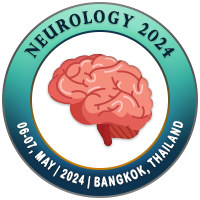
Jiraporn Boontho
Somdejprabuddhalertla Hospital, ThailandTitle: Factors predicting the functional outcome of intravenous thrombolysis in acute ischemic stroke at Somdejprabuddhalertla Hospital
Abstract
Background: The use of recombinant tissue plasminogen activator (rt-PA) has been the standard of care for treatment of acute ischemic stroke for several years. The treatment outcomes for thrombolytic patients were variable. Factors that predicting the functional outcome were inconclusive.
Objectives: To determine which factors were predicting good and poor outcome of intravenous thrombolysis in stroke patients.
Methodology: This study was retrospective descriptive study in 135 patients who were diagnosed as acute ischemic stroke and received rt-PA treatment in Somdejprabuddhalertla hospital from December 2013 to December 2020.The set of statistical processes for this study were Student’s t test, Chi-square and multivariable logistic regression model.
Results: From 135 patients who were eligible for this study. The prevalence of good outcome (mRS 0-2) was 85 patients (63%), the prevalence of poor outcome (mRS 5-6) 18 patient (13.3%), death rate 5.9%. Factors that predicting the good outcome were NIHSS < 8 (OR 13.9, p-value < 0.01,95% CI 4.02-48.24) and early improvement (OR 18.63, p-value < 0.01,95% CI 2.06-16.86). Factors that predicting the poor outcome were atrial fibrillation (OR 26, p-value < 0.01,95% CI 2.8-24.6) and early worsening (OR 26.71, p-value < 0.01,95% CI 4.75-150)
Conclusions: The factors that predicting the good outcome were NIHSS < 8 and early improvement. The factors that predicting the poor outcome were atrial fibrillation and early worsening.
Keywords: Acute ischemic stroke, rt-PA (recombinant tissue plasminogen activator), Clinical outcome
Biography
To be updated.

